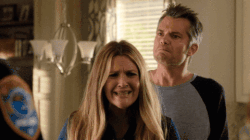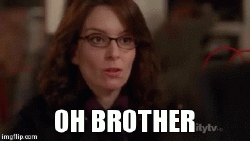As I sat down to write my final research argument, I knew it was going to be a struggle. The assignment is an 8-10 page paper that is the culmination of all the work we’ve been doing all quarter long.

Source: Giphy
So, to help make it a little more fun to write, I decided to incorporate something that I’ve found useful on my blog to help organize my essay. Yup, you guessed it, I broke up my paper using
Headings!
Initially this was more for my own gain, because it served as an outline to my paper and gave me an idea of where I was going when I was writing. But I decided to keep some of them so that the reader can easily navigate through my composition.
The problem that I’m currently having is that I have so many ideas in my head and I’m struggling to make them coherent on paper (is it even on paper if you are writing in a Word document??). The literature review part of the essay was easy, because I had already done the ground work with my annotated bibliography. But, the part that was difficult for me iss “filling the gap.”
I knew I wanted to apply a theory I learned in Public Health Science 1 to the broader conversation about Title IX, so that was fine. But, my problem is trying to identify the main problem with Title IX, because it is really much more complex than just one thing. The researchers in my paper suggest that it is either the policy itself or the disregard for popular opinion.
Honestly, I believe that it is simultaneously both of those things, but also neither of those things (I don’t know how this is possible). They are both key issues, but I wouldn’t say they are the main issue. But, then, is the main issue is a misunderstanding/ignorance of Title IX or is it a value change in the implementation of Title IX?

Source: Floragraphy
They are all interwoven!! The need for quantification in the policy has caused people to disregard Title IX’s true intentions for gender equality, which manifests itself as an implied value change in the policy and therefore, is misunderstood by many people.















